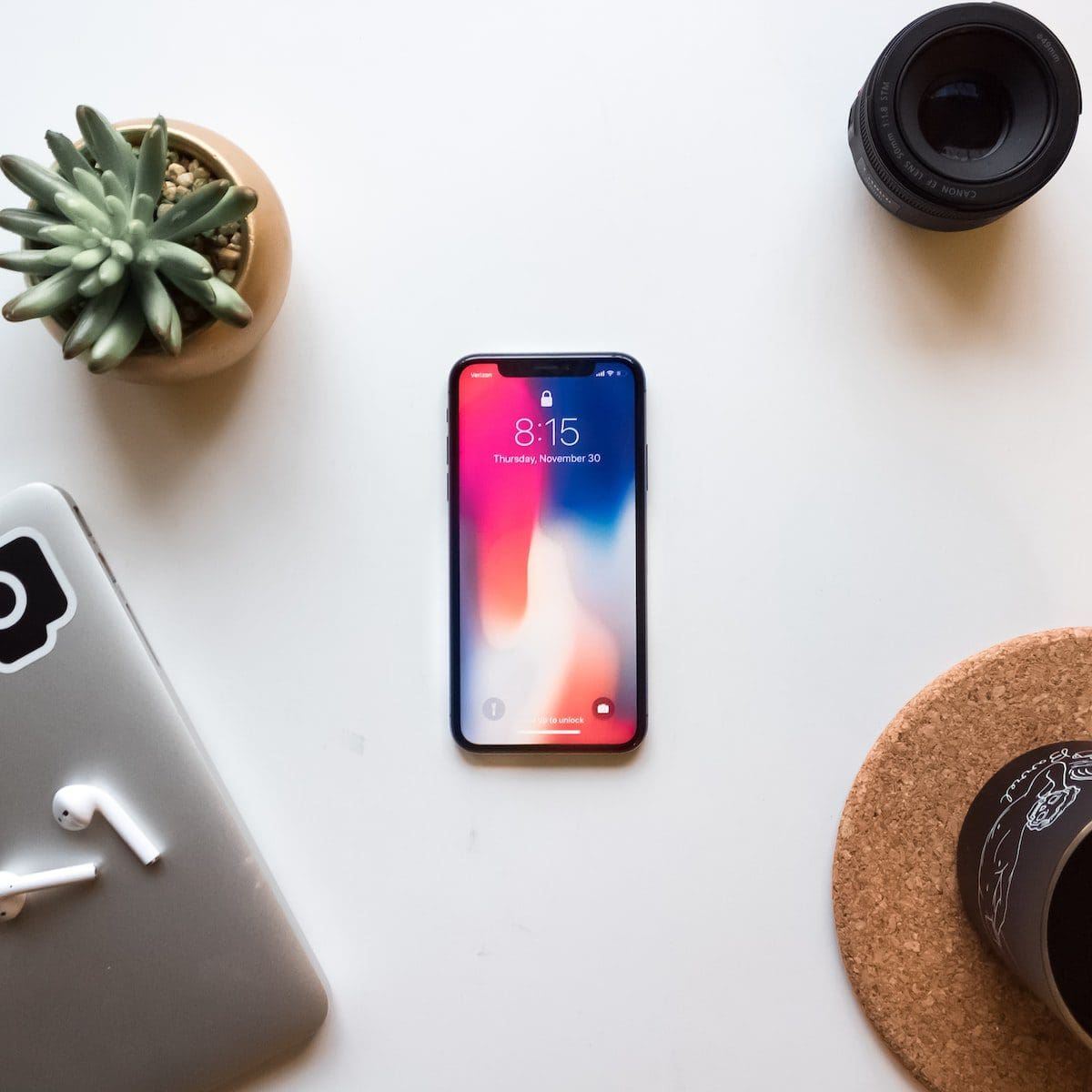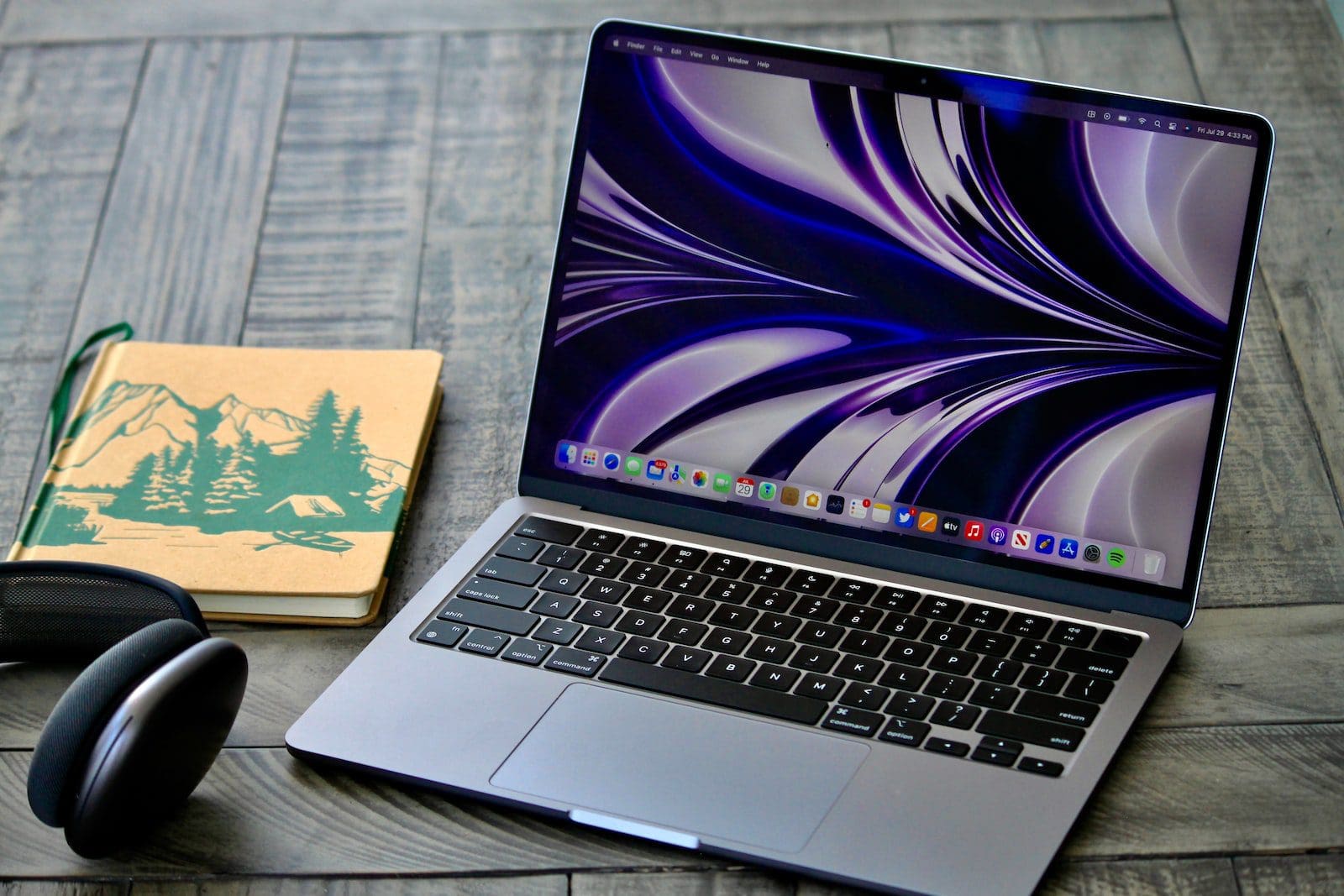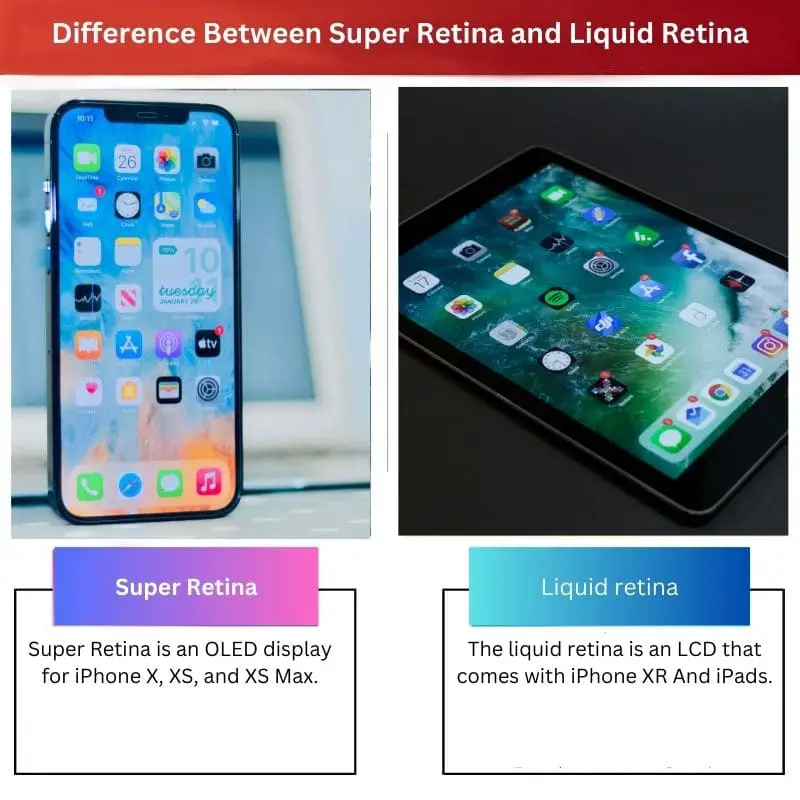As much confusion arises between similar terms, what is the difference between super retinas when both perform the same function? It’s a common misconception that they are the same but have different names because both come with iPhones.
Well, there is evidence that both are different from each other.
Key Takeaways
- Super Retina is an Apple display technology used in iPhones and iPads, featuring OLED panels with high resolution, contrast ratio, and color accuracy.
- Liquid Retina is another Apple display technology used in iPhones and iPads, featuring LCD panels with advanced pixel masking and sub-pixel anti-aliasing for smooth curves and sharp text.
- Both Super Retina and Liquid Retina are Apple display technologies. Still, Super Retina uses OLED panels with higher contrast ratios, while Liquid Retina uses advanced LCD panels for smooth visuals and sharp text.
Super Retina vs Liquid Retina
Super Retina is a high-resolution OLED display that offers a sharper image with deeper blacks and more vivid colors. It is used in models such as the iPhone XS. Liquid Retina is a type of LCD display that has a slightly lower resolution but still offers a good color reproduction and brightness.

The Super Retina is a display that Apple has used in iPhone X, XS, and XS max phones. It has OLED technology, which delivers high resolution and an extremely high contrast ratio with no backlight. It releases light from each pixel and provides a thinner display.
Liquid Retina is a display that is currently used in iPhone XR. This display has a higher pixel level, creating a paper-like screen effect where all pixels are not noticeable to the naked eye.
Comparison Table
| Parameter of comparison | Super Retina | Liquid retina |
|---|---|---|
| Meaning | Super Retina is an OLED display with high resolution and incredibly high contrast. | Liquid Retina is an LCD with a higher pixel level, which creates a paper-like screen effect where all pixels are not noticeable. |
| Availability | Super Retina is an OLED display for iPhone X, XS, and XS Max. | The liquid retina is an LCD that comes with iPhone XR And iPads. |
| Brightness | The maximum brightness of Super Retina is 800 nits. | The full brightness of the Liquid Retina is 625 nits. |
| Contrast | The contrast ratio of Super Retina is 1,000,000:1. | The contrast ratio of the Liquid Retina is 1400:1. |
| Pixel ratio | Super Retina has a pixel density of 458 PPI in both XS and XS Max. | Liquid Retina has a pixel density of 326 PPI on the iPhone and 264 iPads. |
| Quality | iPhone with super retina display has a better screen display, and visuals are also reasonable compared to liquid retina. | Its visual quality is not as good as the super retina display. |
| Haptic touch | Haptic touch is missing in the super retina OLED display. | Haptic touch is present in the liquid retina LCD. |
| Expensive | Manufacturing of OLED is much costlier; the super retina is pricier than the liquid retina. | It is less expensive compared to Super Retina. |
What is Super Retina?
The Super Retina is an OLED display found recently on iPhone X, iPhone XS, and iPhone XS Max. It was designed by Apple to meet the higher standard of the people.
It is one of the best OLED displays, which offers impressive colour accuracy in the industry. It has the best quality display, high brightness, perfect contrast, and excellent cinema-standard with a broad scope.
It has the best system of colour management, which delivers an optimal viewing experience.
Both Super Retina and Super Retina XDR, found in iPhone 11 Pro and iPhone 11 Pro Max, give High Dynamic Range (HDR) and a wide range of dark and light areas, video and photo.
It uses organic emitting diode technology. Super Retina uses advanced technology to provide an excellent viewing experience and raises the standard of the iPhone series.
OLED technology gives high contrast and high resolution with no backlight; it discharges light through each pixel and provides a thin display.
It is one of the best OLED displays that undoubtedly provide high contrast, brightness, excellent colour accuracy, and broad colour support.
An OLED display sometimes shifts colour and hue; it is the feature of an OLED display. After long-term use, an OLED display can show visual changes.

What is Liquid Retina?
A Liquid Retina is an LCD that comes in iPhone 11, iPhone XR, and Ipad Pro. This display relies on a higher pixel level, creating a paper-like screen effect. In this display, pixels are not visible to the naked eye.
It does not have a high contrast level; commonly, it comes in an expensive apple device like iPhone 11 Pro. The Liquid Retina display has a pixel density of 1792*828, found in the iPhone XR and iPhone 11.

Main Differences Between Super Retina and Liquid Retina
- Super Retina is an OLED screen display, whereas Liquid Retina is an LCD.
- Super Retina comes in-built into iPhone X, XS, and XS Max. On the other hand, Liquid retina is found in iPhone XR And iPads.
- Liquid Retina is one of the oldest technologies for making a display, whereas Super Retina is a new technology for making a display.
- The parts of Super Retina are more expensive than Liquid Retina.
- The OLED display’s pixel ratio is 458 PPI on iPhone XS and XS Max, whereas the pixel ratio of Liquid Retina is 2326 PPI on the iPhone and 264 PPI on iPads.
- It provides an OLED display with high contrast, high brightness, excellent colour accuracy, and broad colour support in the mobile industry. Liquid Retina does not offer these features.





